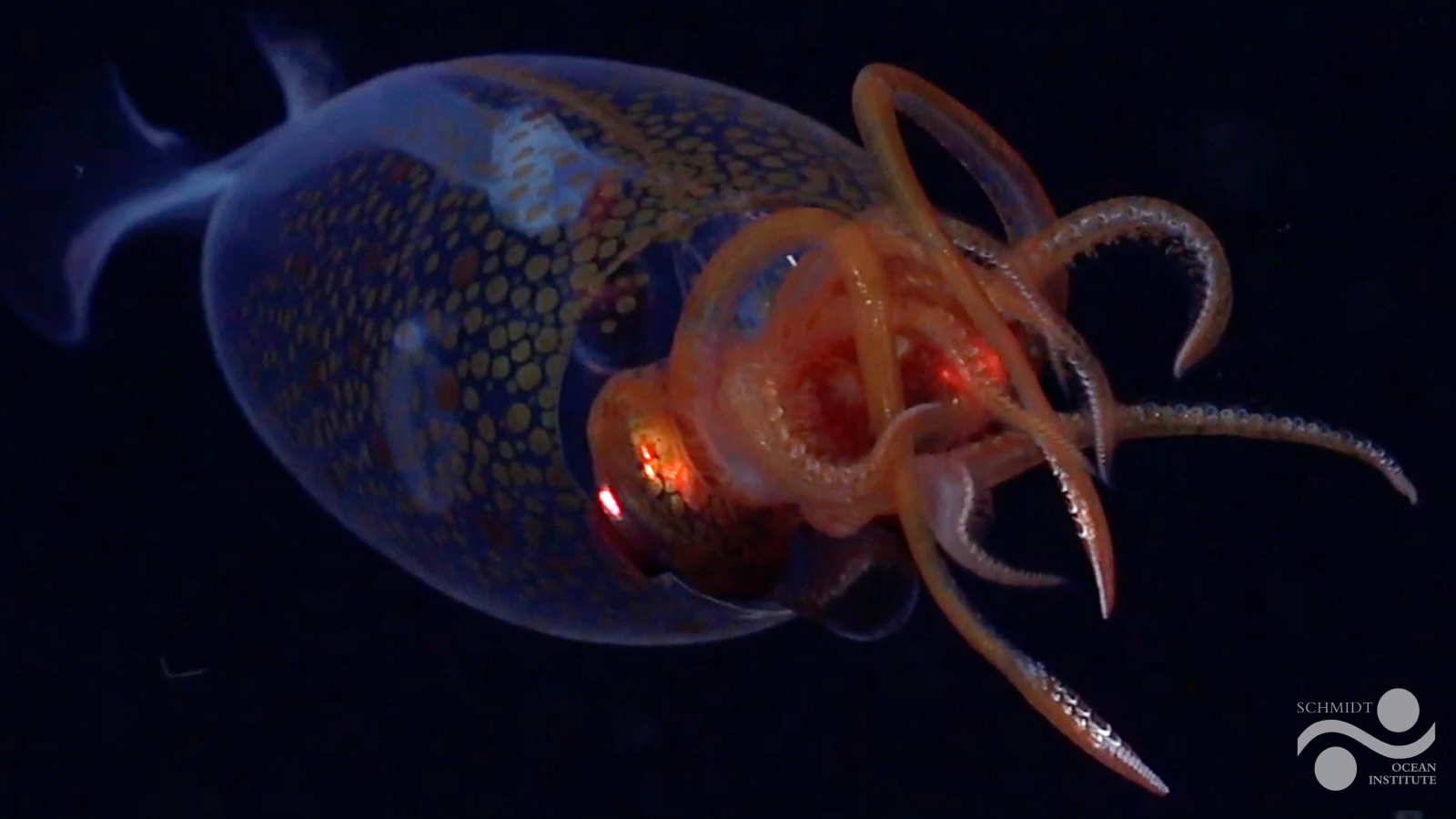
The elusive colossal squid has finally been caught on camera, an entire century after it was first discovered.
A team of scientists aboard the Schmidt Ocean Institute’s research vessel Falkor filmed a not-so-colossal juvenile measuring 11.8 inches (30 centimeters) long as it swam through the ocean near the South Sandwich Islands at a depth of around 1,968 feet (600 meters).
The video, which was captured on March 9 in the South Atlantic Ocean by a remotely operated vehicle (ROV) named SuBastian, shows the translucent baby squid gently swimming through the abyss of the deep ocean, with its tiny tentacles dangling behind it.
“It’s exciting to see the first in situ footage of a juvenile colossal and humbling to think that they have no idea that humans exist,” Kat Bolstad, a squid researcher at the the Auckland University of Technology in New Zealand, who was an independent scientific expert consulted to verify the footage, said in a statement. “For 100 years, we have mainly encountered them as prey remains in whale and seabird stomachs and as predators of harvested toothfish.”
Colossal squid (Mesonychoteuthis hamiltoni) are bigger than even the famous giant squid (Architeuthis dux). They are considered the largest invertebrates on the planet, measuring up to 46 feet (14 m) long — as long as a semitrailer — and weighing as much as 1,100 pounds (500 kilograms). They have the largest eyes of any known animal, which can measure up to 11 inches (27 cm) across — about the size of a soccer ball.
These bizarre creatures live deep beneath the Antarctic waters of the Southern Ocean. They live deeper and deeper with age, with the youngest and smallest squid being found down to about 1,640 feet (500 m), adolescents living between 1,600 and 6,600 feet (500 to 2,000 m), and fully grown adults living even deeper.
This year marks 100 years since the colossal squid was formally identified and named, but in the century since, very few have ever been seen. The species was first discovered after two of its arms were found in the stomach of a sperm whale during the winter of 1924-1925.
The new video is the first-ever live observation of this species in its natural habitat. Dying adult colossal squid have been filmed by fishermen, and the first complete specimen was captured in 2007 by a fishing vessel near Antarctica. Most of what we know about this species and its lifestyle comes from beaks found in sperm whale stomachs. Only 12 complete colossal squid specimens had ever been found as of 2015, and about half of those were juveniles.
The scientists on the previous Falkor expedition in January also filmed the first-ever confirmed footage of the glacial glass squid (Galiteuthis glacialis), which had also never been observed in its natural habitat before now.
“The first sighting of two different squids on back-to-back expeditions is remarkable and shows how little we have seen of the magnificent inhabitants of the Southern Ocean,” Jyotika Virmani, Schmidt Ocean Institute’s executive director, said in the statement. “These unforgettable moments continue to remind us that the ocean is brimming with mysteries yet to be solved.”



